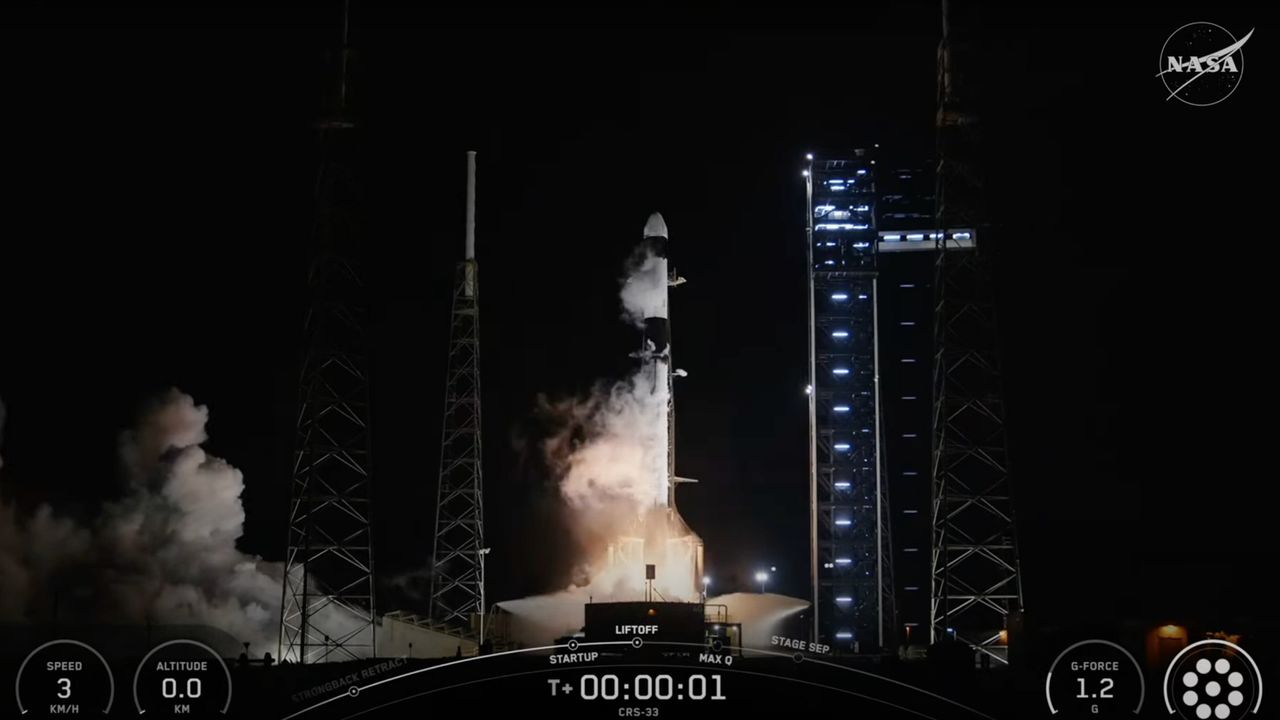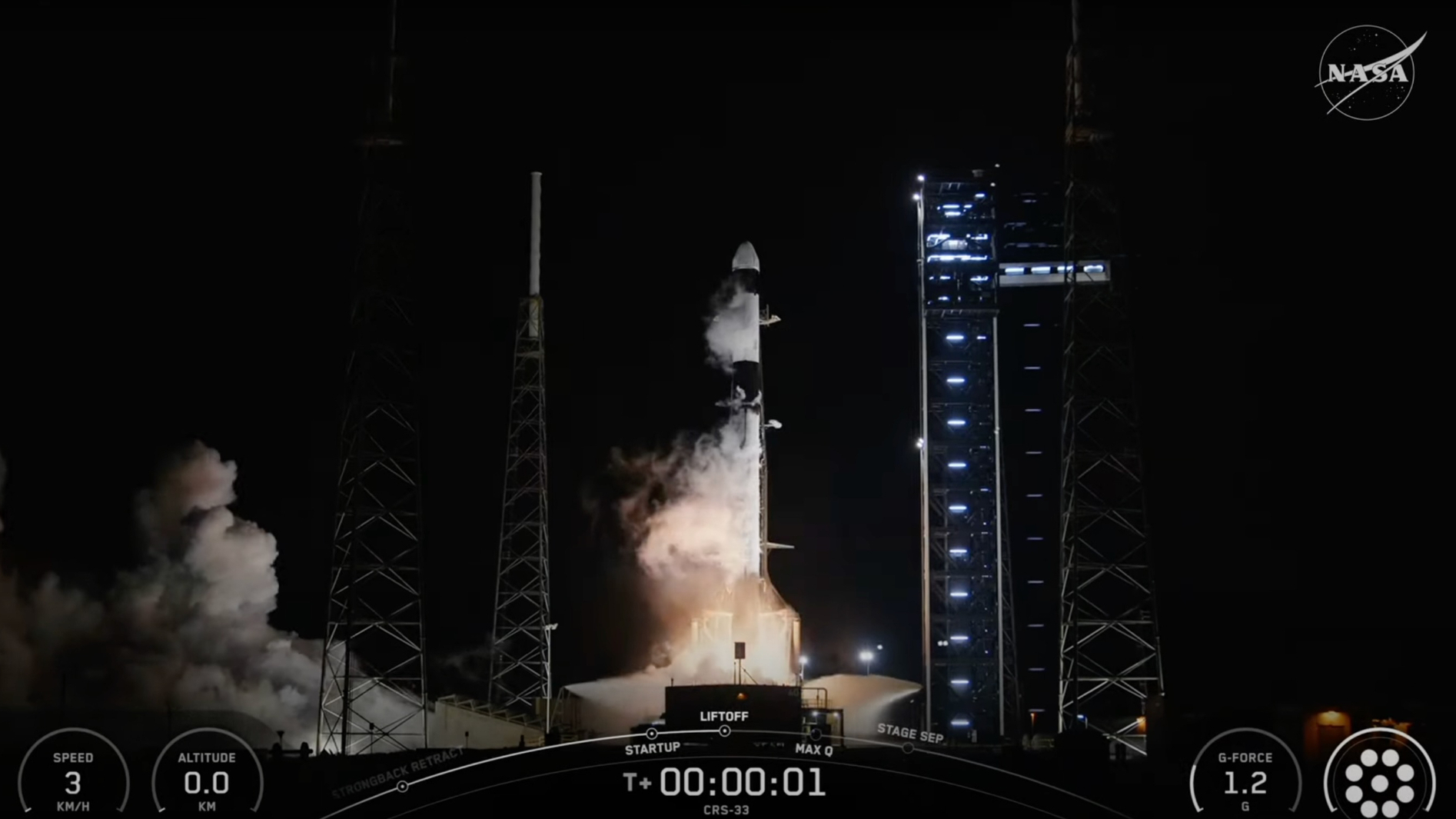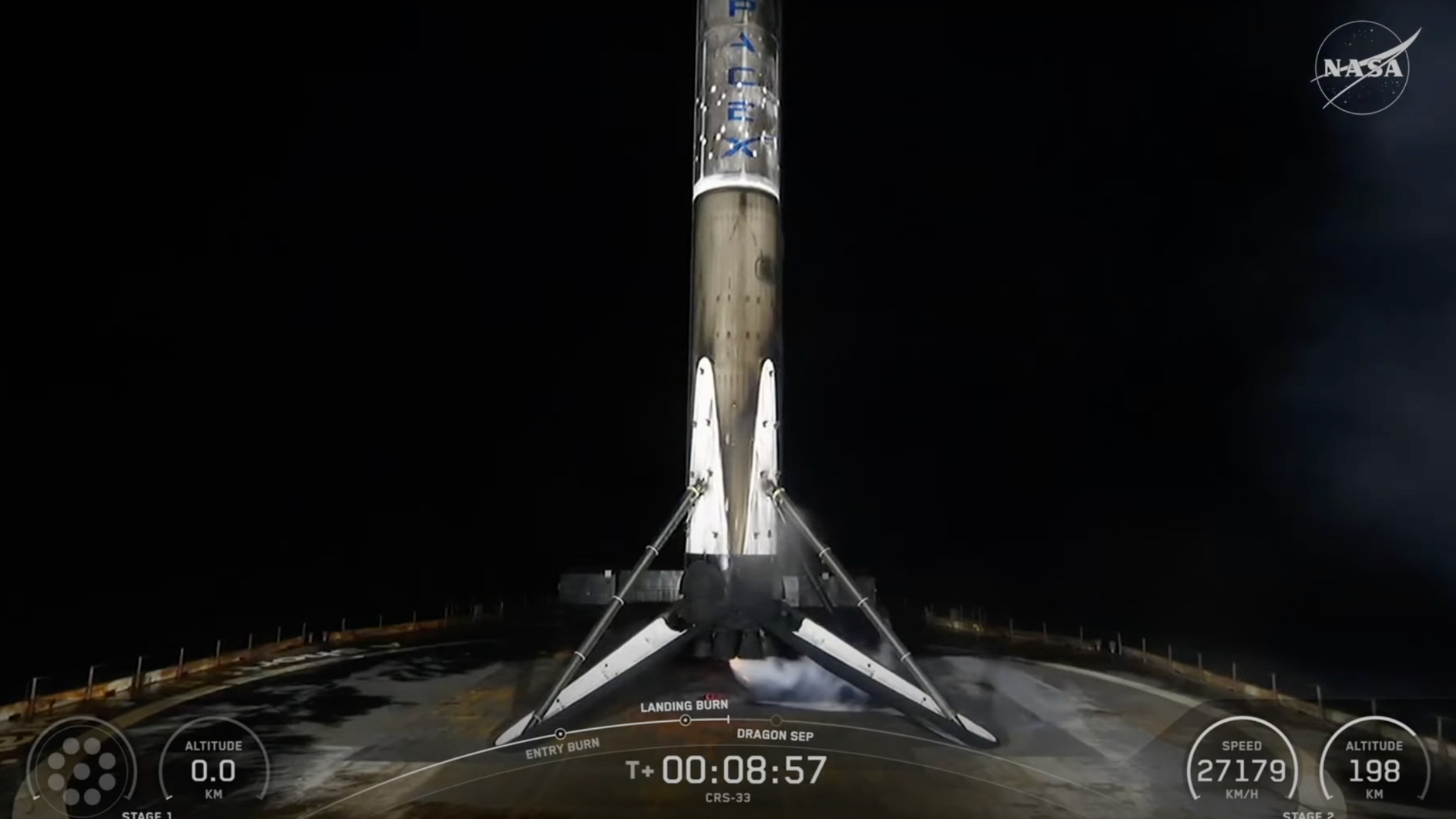
A SpaceX cargo ship laden with 5,000 pounds (2,270 kilograms) of supplies launched to the International Space Station early Sunday morning (Aug. 24).
A robotic Dragon capsule lifted off atop a SpaceX Falcon 9 rocket on Sunday at 2:45 a.m. EDT (0645 GMT) from Space Launch Complex 40 at Cape Canaveral Space Force Station in coastal Florida. The launch kicked off SpaceX's 33rd mission for NASA's Commercial Resupply Services program, hence the flight's name: CRS-33.
About 8.5 minutes after liftoff, the Falcon 9's first stage came back to Earth for a landing on the SpaceX drone ship "A Shortfall of Gravitas," which was stationed in the Atlantic Ocean. It was the seventh launch and landing for this particular booster, according to a SpaceX mission description.

If all goes to plan, the CRS-33 Dragon will dock with the International Space Station (ISS) on Monday (Aug. 25) at the forward port of the Harmony module. You can watch the rendezvous live; NASA's coverage will begin at 6 a.m. EDT (1000 GMT), with docking scheduled for 7:30 a.m. EDT (1130 GMT).
In the near future, the Dragon will also do a "reboost demonstration" at the ISS — meaning that it will fire its thrusters to take the space station higher in its orbit. These reboosts are needed periodically because the ISS flies through a thin skein of air molecules while orbiting Earth roughly 250 miles (400 kilometers) up. The resulting drag, slight as it is, requires supply ships to boost the station every now and again so that it can keep operating.
These reboosts have historically been done by Russian Progress spacecraft. But Russia may withdraw from the ISS program as soon as 2028, so NASA has tasked its U.S. cargo ship suppliers — SpaceX and Northrop Grumman, which builds the Cygnus vehicle — to perform reboost demonstrations as supplements. (The ISS is expected to keep operating until late 2030 or early 2031.)

Resupply missions like CRS-33 launch every few months to deliver fresh food, more supplies and equipment, and new science investigations to the astronauts living on board the ISS. And quite a bit went up on Sunday.
"In addition to food, supplies, and equipment for the crew, Dragon will deliver several experiments, including bone-forming stem cells for studying bone loss prevention and materials to 3D print medical implants that could advance treatments for nerve damage on Earth," NASA officials said in a prelaunch statement. "Dragon also will deliver bioprinted liver tissue to study blood vessel development in microgravity and supplies to 3D print metal cubes in space."
The CRS-33 Dragon is expected to remain at the ISS until December. Space station astronauts will then load Dragon with cargo and completed science experiments for shipment back to Earth, and the spacecraft will splash down in the Pacific Ocean off the California coast.
Editor's note: This story was updated at 2:56 a.m. ET on Aug. 24 with news of successful liftoff and rocket landing.







